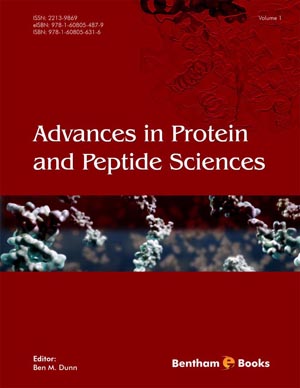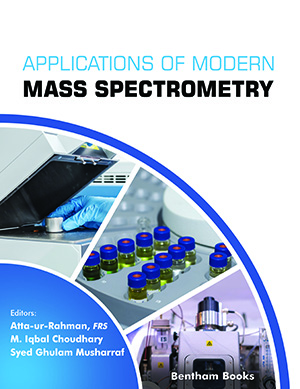Book Volume 13
Remarkable Advances in the Asymmetric Synthesis of Biologically Active Natural Compounds from the Advent of Chiral Auxiliaries
Page: 1-51 (51)
Author: Gaspar Diaz-Muñoz, Izabel Luzia Miranda, Suélen Karine Sartori, Daniele Cristina de Rezende, Jefferson Viktor Barros de Paula Baeta, Fernanda Rodrigues Nascimento and Marisa Alves Nogueira Diaz
DOI: 10.2174/9789811405082120130003
PDF Price: $30
Abstract
This chapter reports advances in synthetic methodologies employing chiral auxiliaries for the stereoselective synthesis of biologically active natural molecules. Derivatives of naturally occurring compounds such as amino acids, carbohydrates, and terpenes, chiral auxiliaries have been described as an essential aid for the construction of highly complex molecules. Among these auxiliaries, we highlight those of Evans, Corey, Yamada, Enders, Oppolzer, Kunz, Meyers, and Schöllkopf, whose contributions led to a remarkable progress in asymmetric synthesis in the last decades and continue to bring advances until the present day.
The Chemistry of Ynamide and Its Application in Organic Synthesis
Page: 52-170 (119)
Author: Siyu Ye and Na Wu
DOI: 10.2174/9789811405082120130004
PDF Price: $30
Abstract
Ynamide, is an understudied but attractive class of alkynes, activated by the donating ability of the nitrogen adjacent to alkynes. With the nucleophilicity on β- carbon and the electrophilicity on α-carbon of ynamides, this review summarizes the syntheses of ynamides and miscellaneous reactions - oxidation, rearrangement, cyclization, and cycloaddition to construct complicated heterocyclic rings. The synthetic methodologies were further applied into natural products synthesis, e.g. marinoquinolines A and C, aplidiopsamine A, rigidin A, and 7-azaserotonin derivative.
Carbon-Heteroatom Bond Formation for Medium Ring Heterocycles
Page: 171-247 (77)
Author: Bhaskar Chatterjee, Prateek Bhamboo, Dhananjoy Mondal and Smritilekha Bera
DOI: 10.2174/9789811405082120130005
PDF Price: $30
Abstract
In major classes of natural products and pharmaceutical compounds, functional groups containing carbon-heteroatom bonds are present and often responsible for significant biological activities. Among them, medium-ring heterocycles are found in a wide range of drug candidates. While the synthesis of fiveand six-membered ring systems is quite common, however, the formation of seven-, eight- and nine-membered heterocycles is not as abundant as entropy factors and transannular interactions often hinder the cyclization method. The ubiquitous presence and use of heteroatoms in both synthetic and naturally occurring pharmaceutical compounds support the review of carbon-heteroatom (particularly, C–N, C–O, C–S, C–S, C–Se, C–Te) bond-forming reactions reported in the literature. In general, the nucleophilic cyclization, organocatalyzed reactions, green synthesis, heterocycloaddition, ring-closing metathesis, radical cyclization, metal-mediated transition cycloaddition, macrolactonization are discussed as the most commonly used strategies for medium-ring construction. The ring expansion strategies, such as pericyclic and sigmatropic rearrangements, play an important role in the formation of C-X bonds. The challenges faced involving structural complexity and biological activities prompted us to review the literature for the synthesis of the heterocycles of the medium-ring size. This chapter is dedicated to recent developments for the construction of C–X bonds in seven-, eight- and nine-membered heterocycles.
Tin(II) Salts: A Versatile and Efficient Lewis Acid Catalyst in Reactions to Add Value to the Glycerol and Terpenic Alcohols
Page: 248-272 (25)
Author: Marcio J. da Silva and Milena G. Teixeira
DOI: 10.2174/9789811405082120130006
PDF Price: $30
Abstract
Glycerol is a renewable origin compound that has been generated on a large scale in biodiesel production processes. Terpenic alcohols are abundant raw material present in several essential oils. Therefore, developing processes to convert this cheap feedstock to a more value-added compound is important from an economic and environmental viewpoint. This work summarizes the main advances obtained in different kinds of tin (II) salts-catalyzed reactions in the last decade, where the goal substrates were glycerol and terpenic alcohols. Tin (II) halides are water-tolerant Lewis acids, solid, inexpensive and easy handling, which showed be efficient catalysts in reactions of carbamoylation and ketalization of glycerol, as well as in esterification of terpenic alcohols. The products generated from terpenic alcohol esterification are valuable ingredients for fragrance, agrochemicals and pharmaceutical industries. Conversely, esters and glycerol ketals are useful as fuel additives. Terpenic carbamates are ingredients in agrochemical synthesis. Therefore, due to great success on these reactions, Sn (II) catalysts are an attractive option to the traditional Bronsted acid catalysts.
(E)-N-Methyl-1-(Methylthio)-2-Nitroethenamine (Nmsm) as a Versatile Ambiphilic Synthon in Organic Synthesis
Page: 273-310 (38)
Author: Pedavenkatagari Narayana Reddy and Pannala Padmaja
DOI: 10.2174/9789811405082120130007
PDF Price: $30
Abstract
(E)-N-methyl-1-(methylthio)-2-nitroethenamine (NMSM) 1 is a versatile molecule that contains four active sites with three functional groups on an ethane motif. NMSM as a precursor reactant has been widely applied in the diversity-oriented synthesis of various heterocyclic motifs, bis-heterocyclic, fused heterocyclic and spirocyclic scaffolds. These privileged scaffolds were synthesized via numerous types of reactions, such as Michael addition, 1,3-dipolar cycloaddition, heteroannulation reaction and also many cascade reactions via multi-component reactions. Moreover, the flexibility and high reactivity of NMSM as a versatile ambiphilic synthon signify it as a suitable building block in medicinal chemistry and bulk drug synthesis. In the present book chapter, we focused on the advances in the chemistry of NMSM as an effective reagent in organic synthesis.
Introduction
Advances in Organic Synthesis is a book series devoted to the latest advances in synthetic approaches towards challenging structures. The series presents comprehensive reviews written by eminent authorities on different synthetic approaches to selected target molecules and new methods developed to achieve specific synthetic transformations or optimal product yields. Advances in Organic Synthesis is essential for all organic chemists in academia and the industry who wish to keep abreast of rapid and important developments in the field. This volume presents the following reviews: Electroluminescent polymers - a review on synthesis from organic compounds Remarkable advances in the asymmetric synthesis of biologically active natural compounds from the advent of chiral auxiliaries The chemistry of ynamides and their application in organic synthesis Carbon-heteroatom bond formation for medium ring heterocycles Tin(ii) salts: versatile and efficient lewis acid catalysts in reactions to add value to the glycerol and terpenic alcohols (E)-n-methyl-1-(methylthio)-2-nitroethenamine (nmsm) as a versatile ambiphilic synthon in organic synthesis






















